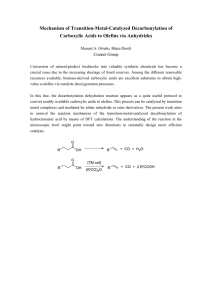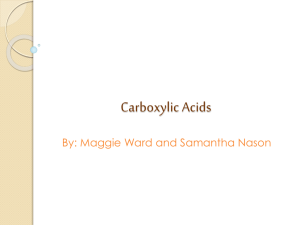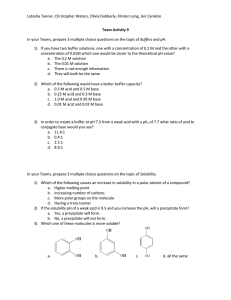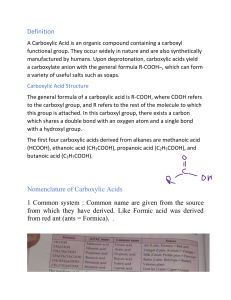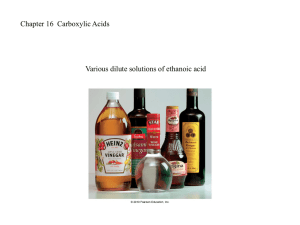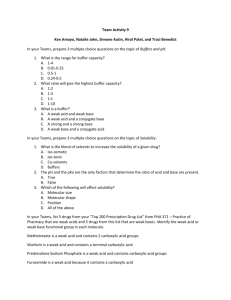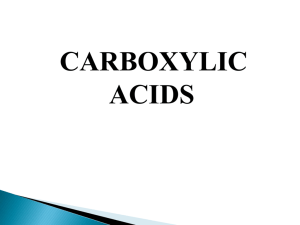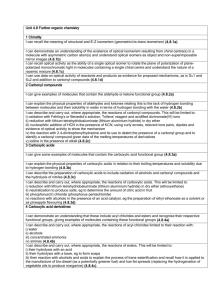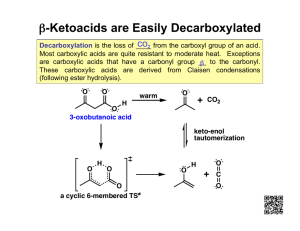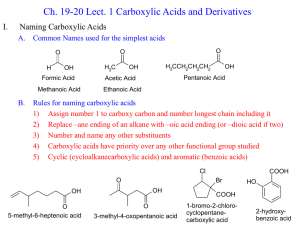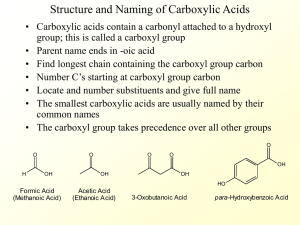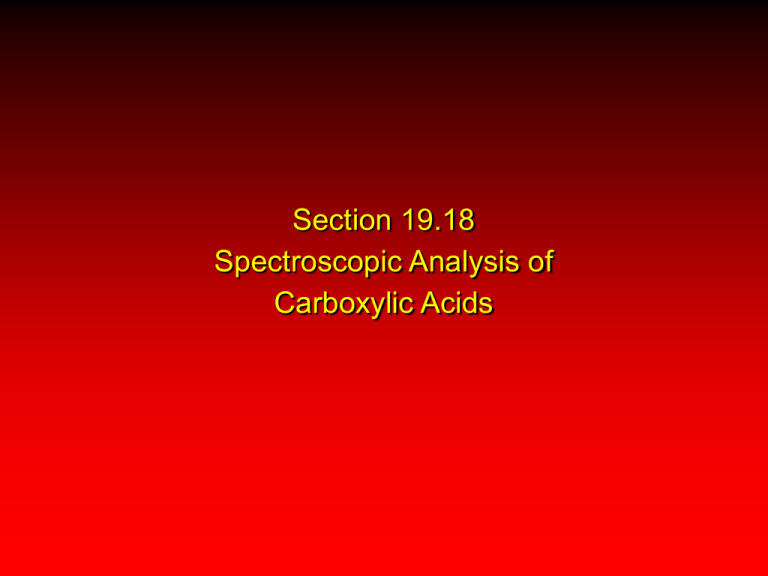
Section 19.18
Spectroscopic Analysis of
Carboxylic Acids
Infrared Spectroscopy
A carboxylic acid is characterized by peaks due to
OH and C=O groups in its infrared spectrum.
C=O stretching gives an intense absorption
near 1700 cm-1.
OH peak is broad and overlaps with C—H
absorptions.
Figure 19.8 Infrared Spectrum of 4-Phenylbutanoic acid
C6H5CH2CH2CH2CO2H
O—H and C—H stretch
monosubstituted
benzene
C=O
3500
3000
2500
2000
1500
1000
Wave number, cm-1
Francis A. Carey, Organic Chemistry, Fourth Edition. Copyright © 2000 The McGraw-Hill Companies, Inc. All rights reserved.
500
1H
NMR
proton of OH group of a carboxylic acid is normally
the least shielded of all of the protons in a 1H
NMR spectrum: (d 10-12 ppm; broad).
O
Figure 19.9
CH2CH2CH2COH
12.0
11.0
10.0
9.0
8.0
7.0
6.0
5.0
Chemical shift (d, ppm)
4.0
3.0
2.0
1.0
0
13C
NMR
Carbonyl carbon is at low field (d 160-185
ppm), but not as deshielded as the carbonyl
carbon of an aldehyde or ketone (d 190-215
ppm).
UV-VIS
Carboxylic acids absorb near 210 nm, but
UV-VIS spectroscopy has not proven to
be very useful for structure determination of
carboxylic acids.
Mass Spectrometry
Aliphatic carboxylic acids undergo a variety
of fragmentations.
Aromatic carboxylic acids first form acylium ions,
which then lose CO.
••
O ••
ArCOH
•+
O ••
ArCOH
ArC
+
O ••
Ar
+

